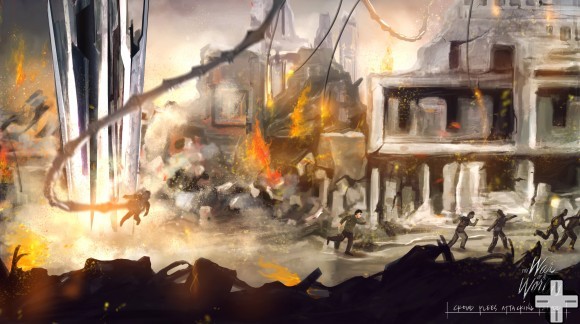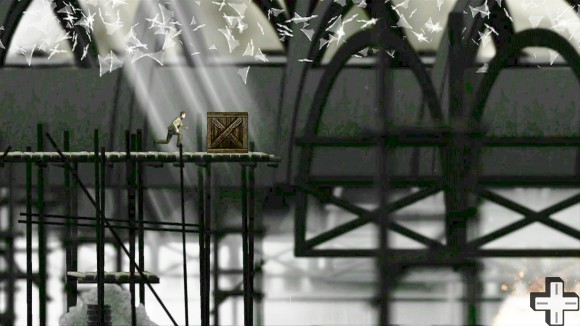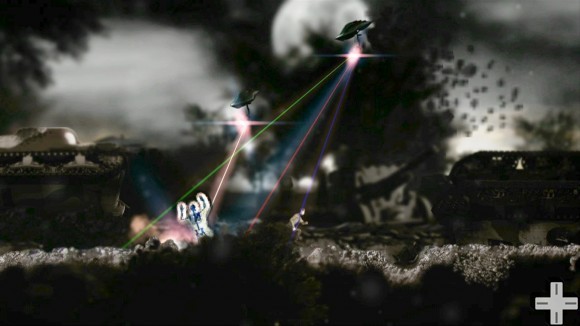The War of the Worlds

It’s a tale that’s so well written, has an atmosphere that transcends the written word and plunges into the depths of your soul that, when released in the USA, caused mass hysteria. The concept of an alien invasion is nothing new to a 21st Century audience, the fact that aliens can no longer be used as a plot twist in a film as it’s “predictable” goes to show the proliferation of this once interesting genre. Yet, in 1898, when The War of the Worlds was first published, it was not only new and refreshing, but a few years later used a modern medium (the radio) to cause panic amongst the Americans.
Over a hundred years later, it’s been developed into a videogame and whilst the original was able to penetrate the mind and soul with its meaningful prose, this game will touch the soul in an entirely different way. The War of the Worlds starts as any traditional game does, with an opening sequence; however, unlike most games throughout the entire opening sequence, which is narrated by Jean-Luc Picard Patrick Stewart, the gamer has control of the lead character.
Of course, this means that where the player ends up to “start” the game, will depend on where they are when they get hit by that first alien blast. Yet, getting it wrong, well, it has some painful consequences. Unlike many games these days, where if you make a mistake it’s not a problem, you just reload the save file, The War of the Worlds is much harsher. It’s almost like playing a SEGA Mega Drive game again when you start at the beginning of the level after each death, or at one check point, a long time ago in the level. This makes The War of the Worlds far more challenging and therefore a more rewarding experience.
Patrick Stewart lends his considerable talent to the game and narrates the progress and specific points in the game; this expands on the story and gives the gamer reasons for actually trying to complete a level. In addition to this, mini radio broadcasts explain what’s happening in the wider London area and detail the destruction the world is facing. The gravitas of the delivery also lends itself well to the surrounding landscape. The surroundings in level shows a world without power, in chaos, whilst basic, they remain beautiful and in the background landscapes shows a variety of aliens attacking the world and a London on fire.
The lead character isn’t the super hero we’re used to either. He can’t survive a twenty foot fall, he can scarcely cope with a twelve foot fall! He can’t walk through fire, he can’t take laser beams to the chest and be OK and he certainly can’t cope with electric. These very human traits take a while to get used to, and judging speed and distance is something that takes a bit of time to get used too, yet it only adds to the realisation that the character is simply a normal guy trying to survive an alien invasion.
Precision and timing are two words that really could sum up The War of the Worlds in a nice little package. However, these two words don’t always flow to the developers, some of the patterns in the way the electrics move, some of the slightly off attacks of black mist, or in one particular area where you die if you’re even half a second out will cause many people just to switch off. Yet, looking past these few and infrequent flaws the gameplay is actually very enjoyable. Whilst the multiple deaths are frustrating, it makes completing the level even more enjoyable. There are eleven levels to work through and only at certain points will the game save, no voluntary save or load options, with that combined with the amount of times the gamer will die, it feels closer to fifty levels rather than eleven.
The characters responsiveness is also a little off, it’s not just down to the ability to be pixel perfect, but throughout the game the lead character runs in a strange way, jumps in a strange way, rolls in a strange way. When you try and go to make him jump, there’s usually a slight delay as well. This can lead to some very frustrating deaths that really aren’t the players fault, but just bad programming. Yet the majority of the slow down is consistent and can be factored in.
The War of the Worlds is a game from another decade, much akin to the story it’s taken an old idea and made it relevant and enjoyable once again. Whilst the incredibly steep learning curve and brutal treatment of failure will put many gamers off, it will appeal to those who remember playing NES games and saying, why aren’t games hard anymore.









